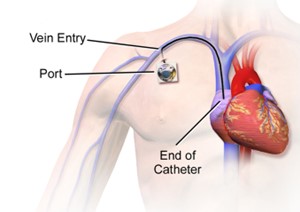To determine the effectiveness of medications that a patient has received to reduce left ventricular afterload, which hemodynamic parameter will the nurse monitor?
Pulmonary artery wedge pressure (PAWP)
Systemic vascular resistance (SVR)
Pulmonary vascular resistance (PVR)
Central venous pressure (CVP)
The Correct Answer is B
Systemic vascular resistance represents the resistance to blood flow in the systemic circulation. It is an important indicator of afterload, which is the force against which the left ventricle must pump to eject blood into the systemic circulation. By monitoring the changes in SVR, the nurse can assess the impact of medications aimed at reducing left ventricular afterload.
A. Pulmonary artery wedge pressure (PAWP) in (option A) is incorrect because: PAWP is a measure of left ventricular preload and reflects the pressure within the left atrium and left ventricle at end-diastole. It is not specifically related to afterload reduction.
C. Pulmonary vascular resistance (PVR) in (option C) is incorrect because: PVR represents the resistance to blood flow in the pulmonary circulation. It is not directly related to left ventricular afterload.
D. Central venous pressure (CVP) in (option D) is incorrect because: CVP reflects the pressure in the right atrium and is an indicator of right-sided cardiac function. It is not specifically related to left ventricular afterload reduction.
Therefore, to assess the effectiveness of medications in reducing left ventricular afterload, the nurse should monitor the systemic vascular resistance (SVR).
Nursing Test Bank
Naxlex Comprehensive Predictor Exams
Related Questions
Correct Answer is C
Explanation
In septic shock, one of the key goals of management is to restore and maintain adequate intravascular volume. However, in this case, the patient's urine output is low (30 mL/hr for the past 3 hours), suggesting inadequate renal perfusion and potential fluid overload.
Administering additional normal saline at an increased rate (250 mL/hr) without addressing the low urine output could potentially exacerbate fluid overload and further compromise the patient's condition.
A. Administer hydrocortisone (Solu-Cortef) 100 mg IV in (option A) is incorrect because: Hydrocortisone is commonly used in septic shock to help stabilize blood pressure and modulate the inflammatory response.
B. Giving PRN furosemide (Lasix) 40 mg IV in (option B) is incorrect because Furosemide, a loop diuretic, can be administered as needed to address fluid overload or to increase urine output if there is evidence of volume overload.
D. Titrate norepinephrine (Levophed) to keep systolic BP >90 mm Hg in (option D) is incorrect because: Norepinephrine is a vasopressor commonly used in septic shock to increase systemic vascular resistance and maintain adequate blood pressure.
Correct Answer is B
Explanation
Central venous pressure (CVP) is a measurement of the pressure in the central veins, which reflects the blood volume and right-sided cardiac function. High CVP readings may indicate fluid overload or impaired cardiac function, and intervention is necessary to address the underlying cause.
Administering IV diuretic medications can help reduce fluid volume by increasing urine output and promoting fluid elimination. By removing excess fluid, the diuretic medications can help lower the CVP and alleviate the high pressures.
The other options mentioned are not the anticipated actions for addressing high CVP:
A. Increasing the IV fluid infusion rate in (option A) is incorrect because: If the CVP is already indicating high pressures, increasing the IV fluid infusion rate would further contribute to fluid overload and exacerbate the problem. This action would not be appropriate for high CVP readings.
C. Elevating the head of the patient's bed to 45 degrees in (option C) is incorrect because Positioning the patient with the head of the bed elevated is commonly done to prevent complications such as aspiration or improve respiratory function. While it may have other benefits, it does not directly address the high CVP.
D. Documenting the CVP and continuing to monitor in (option D) is incorrect because Documenting the CVP and continuing to monitor is important for ongoing assessment and evaluation. However, in the presence of high CVP readings, intervention is necessary to address the underlying issue rather than solely documenting and monitoring.
Therefore, when a patient's CVP monitor indicates high pressures following surgery, the nurse would anticipate administering IV diuretic medications to help reduce fluid volume and lower the CVP.

Whether you are a student looking to ace your exams or a practicing nurse seeking to enhance your expertise , our nursing education contents will empower you with the confidence and competence to make a difference in the lives of patients and become a respected leader in the healthcare field.
Visit Naxlex, invest in your future and unlock endless possibilities with our unparalleled nursing education contents today
Report Wrong Answer on the Current Question
Do you disagree with the answer? If yes, what is your expected answer? Explain.
Kindly be descriptive with the issue you are facing.
